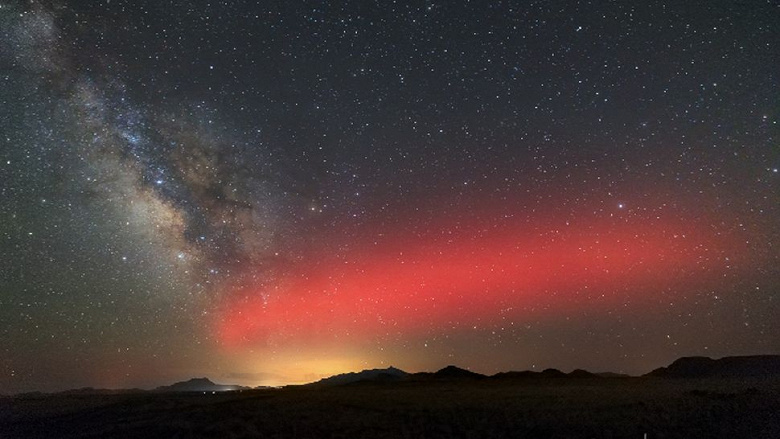“Northern Lights” from SpaceX: light effects that attracted the attention of the scientific world
As SpaceX continues to launch aggressively—the company is aiming for 100 successful launches by 2023—it has become the source of “atmospheric holes” that have raised concerns among scientists.
Astronomers have discovered a new phenomenon they call “the northern lights resulting from the fall of SpaceX rocket boosters.” These impacts temporarily create holes in the ionosphere, causing a red glow reminiscent of the northern lights.
It has been known for years that rocket launches can create holes in the upper ionosphere, a layer of the atmosphere between 80 and 644 kilometers above the Earth's surface where the air is ionized. As a result of such holes, gas molecules in the ionosphere are excited and emit bright red light, similar to the northern lights.
For example, in July, a SpaceX Falcon 9 rocket created a hole over Arizona, and in September, a US Space Force rocket punched an ionospheric hole over California, resulting in a faint reddish glow. Recently, astronomers at McDonald Observatory in Texas noticed a similar red glow after the Falcon 9 rocket exited the Earth's atmosphere.
Astronomers first spotted the “SpaceX northern lights” in February, and are now seeing 2 or more of them every month, according to Stephen Hummel, an astronomer at McDonald Observatory.
The occurrence of holes in the ionosphere is associated with the release of rocket fuel into the ionosphere during its launch. This causes the ionized atoms to recombine, or return to normal gas molecules, causing a red glow similar to the northern lights caused by solar radiation. In this case, a kind of “hole” is formed in the surrounding plasma or ionized gas. However, these holes close after 10-20 minutes as a result of the re-ionization of the molecules.
SpaceX's boosters release fuel during the fall to prevent it from falling into populated areas and to direct debris into the Atlantic Ocean. The resulting holes typically appear over the central and southern United States 90 minutes after launch at an altitude of about 300 kilometers. They are more spherical in shape compared to the holes created during a rocket launch, and accordingly, the glow produced by these holes is also more spherical in shape and does not remain for a long time.
Despite the fact that ionospheric holes do not pose a threat to life on Earth, their impact on astronomical observations has not yet been fully appreciated. Changes in the ionosphere can also affect shortwave radio communications and GPS signals.
Studying these holes could help scientists gain more information about the chemical processes occurring in the ionosphere, as the density of the ionosphere varies from night to night, and such events could help unravel their nature, according to a commentary by physicist Jeffrey Baumgardner of Boston University.
In addition, SpaceX rockets create other lighting effects. As rocket boosters fall, they release their remaining fuel in the upper atmosphere, creating a cloud of small ice crystals. Under certain conditions, these crystals can reflect sunlight, causing the illuminated fuel to create bright spirals in the night sky, nicknamed “SpaceX Spirals.”
This year, observers recorded two such spirals: the first appeared in January over Mauna Kea in Hawaii, and the second in April during the traditional northern lights in Alaska.

